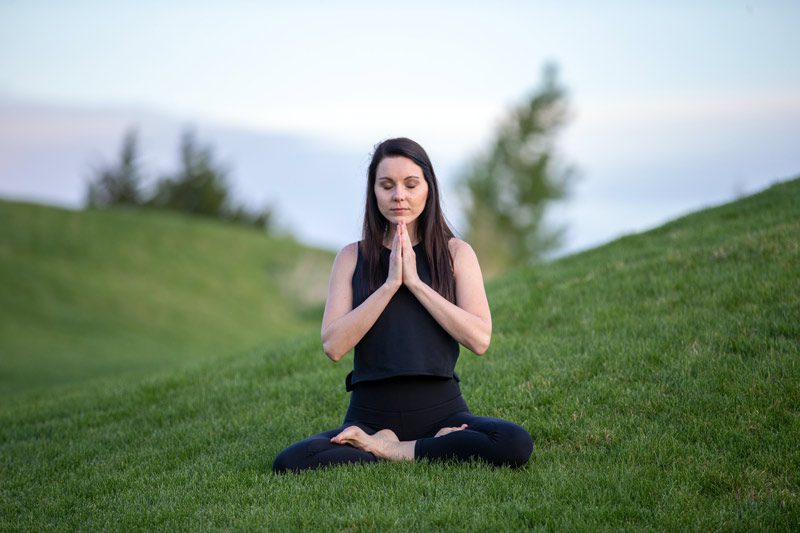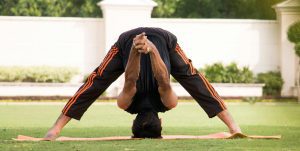Most wellness experts agree that restorative yoga has many benefits, especially for beginners. It’s a holistic and therapeutic approach to physical and mental health. Regardless of whether you are young or old, mobility through passive stretching can help everyone.
But beginners don’t always know where to start. With so many online and in-person classes available, it’s natural to feel overwhelmed. The great thing is that you can start slow and work on it from home. Here is everything you need to know about incorporating restorative yoga into your life.
What Makes Restorative Yoga Different?
Restorative yoga is different than yoga performed in hot yoga studios. It’s also different from yoga classes that try to increase your strength. Restorative yoga is passive stretching meant to be calming for the body and mind. Not much effort is put into practice, but the benefits are instrumental.
Because you are moving slower through the asanas (poses used in hatha yoga), you will likely use props to help you find a deeper stretch and support. Things like yoga blocks and stretching rope are the most common.
Therapies that take a holistic approach to feeding your mind, body, and soul come in different forms. You can even go a step further by taking advantage of the benefits of using ear seeds. Ear seeds are an approach to auricular therapy that offer benefits such as reduced chronic pain and stress and improved sleep. Just like yoga!
Benefits of Restorative Yoga
When it comes to mental health and wellness, restorative yoga puts the whole picture together. We can separate the practice into body and mind, but sometimes that can be too general. Here is a deeper dive into what you can expect.
● Peace Of Mind
In today’s world, it’s always about go, go, go! Checking online every few minutes to find out what everyone is doing makes it hard to live in the present. Restorative yoga works on the mind to use breath and the asanas to move slowly and relax.
Naturally, when we take longer, deeper breaths, our heart rate decreases, creating that relaxed state. It also allows the muscles to soften and bring our bodies into deeper stretches.
● Mobility and Function
As we get older, we lose our natural ability to be limber. And younger athletes put stress on their bodies and create tears in their muscle tissue. Stretching through this promotes recovery while preventing injury.
There also becomes an increased sense of balance. This is particularly important for older adults at greater risk for falling.
● Focus and Awareness
Similar to peace of mind, we have shorter attention spans. Much like the benefits of meditation, restorative yoga has a focus and awareness element. Being present to truly find your breath is not always as easy as it sounds.
It takes practice to be able to calm your center and be present. This translates into other areas of your life by increasing efficiency and reducing anxiety. It also has a positive impact on your sleep.
● Reduce Muscle Joint Stress
Because the practice is gentle, it does not put a lot of pressure on the joints and muscles. At the same time, stretching and moving reduces the inflammation in your body that you may develop during other exercises. Tight muscles create pressure, and stretching relieves this.
How To Get Started
The benefits sound great, so where do you get started? We mentioned there are several ways to do this. Let’s check them out.
In-person
In-person classes are a great way for beginners to get started because the instructor can help immediately if any correction is needed. Choosing a class should be done by recommendations from the yoga studio and online reviews, if available. If you go with the wrong class, you may find yourself in something more challenging than restorative yoga is meant to be.
Online
It is not always possible to go in person for many reasons. Maybe you aren’t comfortable going in person, or there isn’t the best class offered near you. There are plenty of high-quality instructional classes online. You can pay for a subscription for the best programs, but as a beginner, you may want to start with free classes on YouTube.
On Your Own
Guided restorative yoga is always great, but you can also do it on your own anywhere at any time. The poses aren’t that hard to get into, so following instructions from pictures works, too. While you can teach yourself the basic poses, always remember that if it doesn’t feel right, you should stop.
Remember The Benefits
Yoga does not resonate with everyone right away. That might be because of the many benefits we hope to gain. Our minds are busy, and our bodies are sore and tight. As a beginner, it may be challenging to focus and hold stretches for extended periods. But you should find the stretches getting easier and deeper with each class.
After time you may feel lighter like your body can move in ways it couldn’t before. This, in turn, will lift your mood and spirits. You are accomplishing something physically while letting your mind rest and taking a break from everyday problems. Being present is one of the best gifts we can give ourselves.
Restorative yoga can be used as alternative medicine or a holistic approach to problems such as migraine headaches, joint stress and pain, and much more. For people who don’t like taking medication, you can think of it as PT (physical therapy) for everything!
About the Author: Nicole McCray realized her love for writing and began to create articles on holistic nutrition, utilizing her educational background in nutritional science when first asked to ghostwrite for a friend’s nutrition blog. While working in the health industry for over a decade, she has grown into an experienced writer who likes to simplify any science-based jargon into reader-friendly language.
The opinions and views expressed in any guest blog post do not necessarily reflect those of www.rtor.org or its sponsor, Laurel House, Inc. The author and www.rtor.org have no affiliations with any products or services mentioned in the article or linked to therein. Guest Authors may have affiliations to products mentioned or linked to in their author bios.
Recommended for You
- Reclaiming Your Future: Effective Strategies for Addiction Recovery - March 26, 2025
- Coping With Social Anxiety In School: Strategies For Success - March 24, 2025
- Overcoming Trauma and Living with Depression: A Journey of Healing - March 20, 2025





